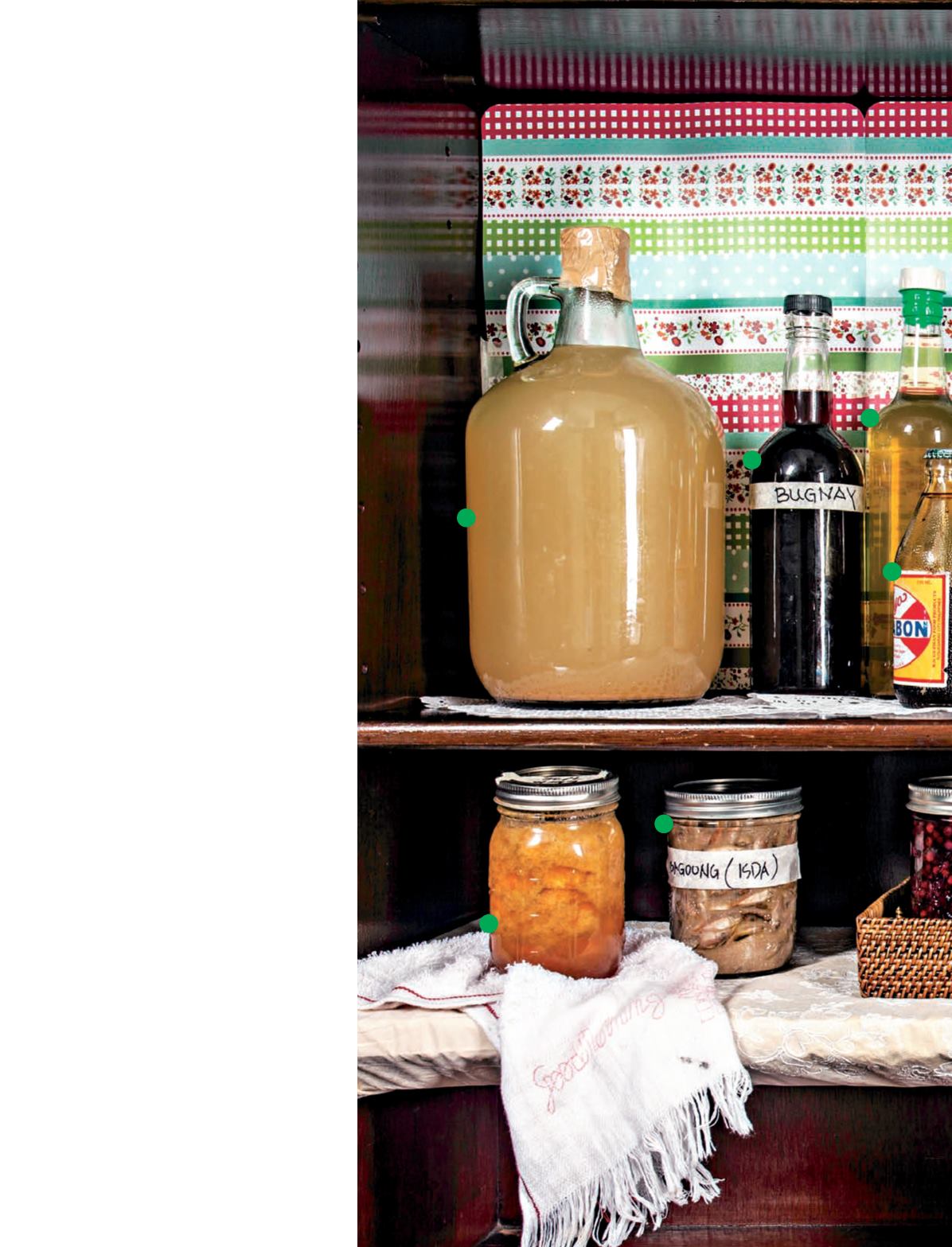
Native natural vinegar
Vinegar is central to Filipino
cooking, but much of the bottled
white stuff churned out by factories
is more artificial acetic acid than
naturally fermented product — and
the difference is profound. Native
Filipino vinegars are made from either
harvested palm sap, fruit or sugarcane
juice, then fermented and aged.
Artisanally produced vinegars vary
wildly in flavor and acidity, retaining
the flavors of their original source.
From the far eastern coast of the
Philippines, coconut sap vinegar from
the Catanduanes islands is cloudy and
tawny, providing a robust, satisfying
dipping sauce. From the fruit trees of
landlocked Abra in Ilocos Sur comes
a clear mango vinegar that’s very mild
with a slight sweetness. True to its
provenance, tamarind vinegar is dark
and thick, with an almost liquor-like
sweetness and the sour-bitter finish
of sampaloc. Black sukang Iloko from
cane sugar is boozy, tannic, like wine.
Bugnay vinegar, made from red berries,
is the same dark-reddish brown of
mahogany, with a sweet, playful tartness.
Regional vinegars are delightful,
with flavors as far ranging as the
juices they’re made from. Producing
natural vinegars, however, is expensive.
The process takes time, and storing
vinegars for ageing ties up resources
for small-scale producers, and the cost
is one of the factors that prevents more
artisanal vinegars from being made.
Besa sees this as one among many
opportunities where the Philippine
government can support local, artisanal
producers by, for example, providing
warehouses where handmade vinegars
can be stored and aged.
Alcohol and preserves
Nipa, coconut and rice can all be
distilled into alcohol. Tapuy rice wine
varies depending on the household that
made it: some are sweet, others more
acidic, and some are fizzy or taste like
port. Preserves further the life and
flavor of a fruit beyond the season, so a
bumper crop of bananas or tart bugnay
berries won’t go to waste.
1
2
3
4
12
13


